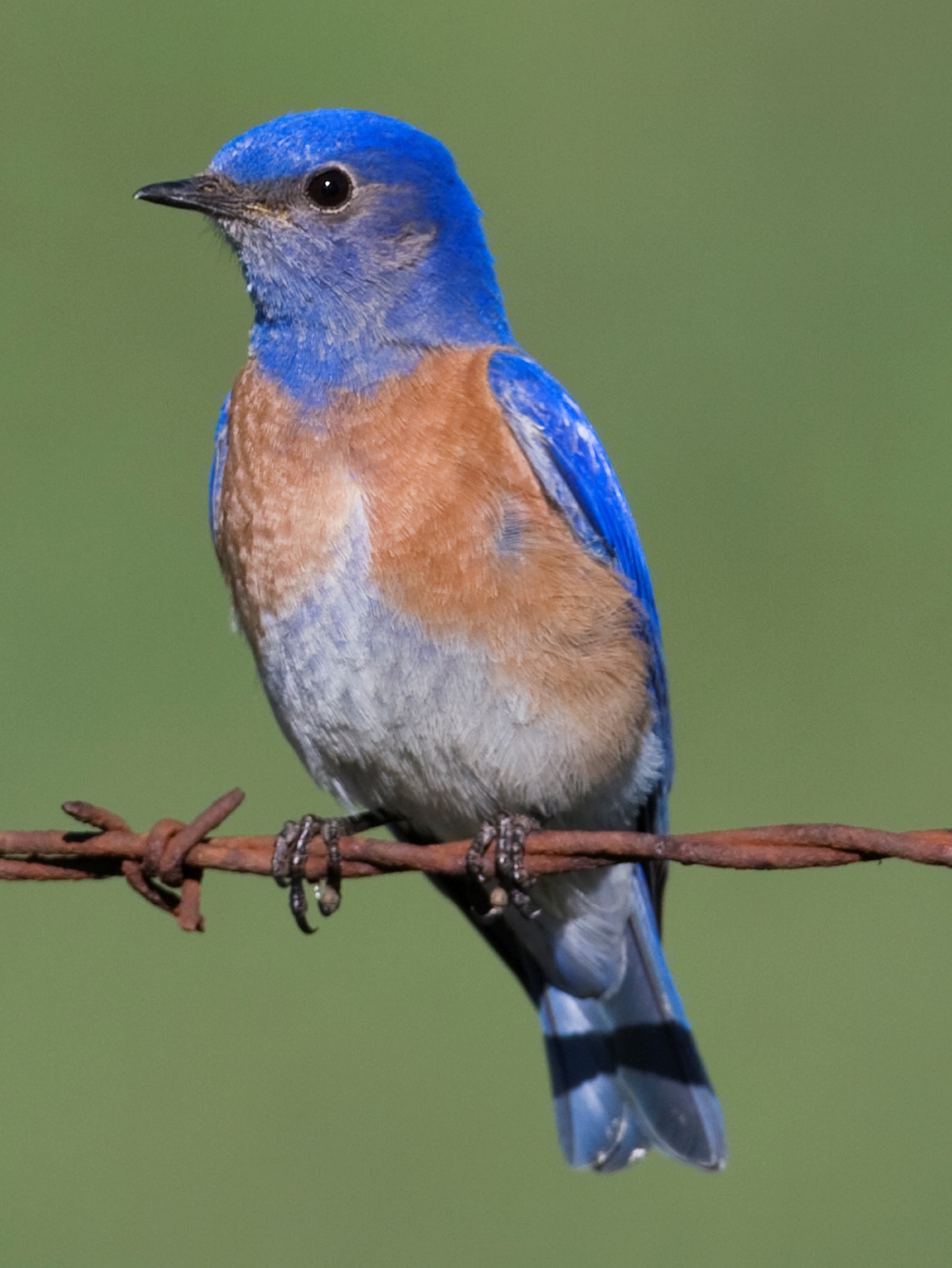- Western Bluebird
Taxobox
name = Western Bluebird
status = LC | status_system = IUCN3.1

image_caption = Adult male
image_width = 200px
regnum =Animal ia
phylum = Chordata
classis = Aves
ordo = Passeriformes
familia = Turdidae
genus = "Sialia"
species = "S. mexicana"
binomial = "Sialia mexicana"
binomial_authority = Swainson, 1832The Western Bluebird ("Sialia mexicana") is a medium-sized thrush.Adults have a grey belly. Adult males are bright blue on top and on the throat with a red breast; they have a brown patch on their back. Adult females have duller blue wings and tail, a brownish breast and a grey crown, throat and back.
Northern birds migrate to the southern parts of the range; southern birds are often permanent residents.
These birds wait on a perch and fly down to catch insects, sometimes catching them in midair. They mainly eat
insect s andberries .Nesting
Nesting habitat
Their breeding habitat is semi-open country across western
North America , but notdesert areas. They nest in cavities or innest box es, competing withTree Swallow s,House Sparrow s, andEuropean Starling s for natural nesting locations. Because of the high level of competition, House sparrows often attack western bluebirds for their nests. The attacks are made both in groups or alone. [Brawn, J. (1990)"The Auk"; The Auk 107(107):606-607]Nest type and habitat comparison
In restored forests Western Bluebirds have a higher probability of successfully fledging young than in untreated forests, but they are at greater risk of parasitic infestations. The effects on post-fledging survival are unknown. [Germaine, H., Germaine, S. (2002) "Restoration Ecology"; Restoration Ecology 10(2), 362–367] Western Bluebirds have been found to enjoy more success with nest boxes than in natural cavities. They started egg laying earlier, had higher nesting success, lower predation rates, and fledged more young in boxes than in cavities but they did not have larger clutches of eggs. [Purcell, K., Verner, J., and Oring, L. (1997) "The Auk"; The Auk 114(4): 646-656.]
The eggs are commonly 4-6 which average 20.8 x 16.2mm. Eggs are oval shape with a smooth and glossy shell. They are pale blue to bluish white and sometimes white in color. Nestlings remain in a nest about 19-22 days before fledging.
Rearing of young
According to genetic studies, 45% of Western Bluebirds' nests carried young that were not offspring of the male partner. In addition, western bluebirds will help their parents raise a new brood after their own nest fails. Western Bluebirds are also helped by other birds belonging to a different species altogether.
Violet-green swallow s have been seen feeding and defending the nests of Western Bluebirds. [ [http://www.birds.cornell.edu/AllAboutBirds/BirdGuide/Western_Bluebird.html All About Birds: Western Bluebird ] ]References
* Database entry includes justification for why this species is of least concern
* Interesting Western Bluebird Facts donated by [http://www.birdhouses101.com/western-bluebird.asp BirdHouses101.com]External links
* [http://www.birds.cornell.edu/programs/AllAboutBirds/BirdGuide/Western_Bluebird.html Western Bluebird page at Cornell]
* [http://audubon-print.com/western-bluebird.html Western Bluebird by John Audubon]
* [http://ibc.hbw.com/ibc/phtml/especie.phtml?idEspecie=5895 Western Bluebird videos] on the Internet Bird Collection
* [http://www.mbr-pwrc.usgs.gov/id/framlst/i7670id.html Western Bluebird Information at USGS Patuxent Bird Identification Infocenter]
* [http://www.sdakotabirds.com/species/western_bluebird_info.htm Western Bluebird Information at South Dakota Birds and Birding]
Wikimedia Foundation. 2010.
